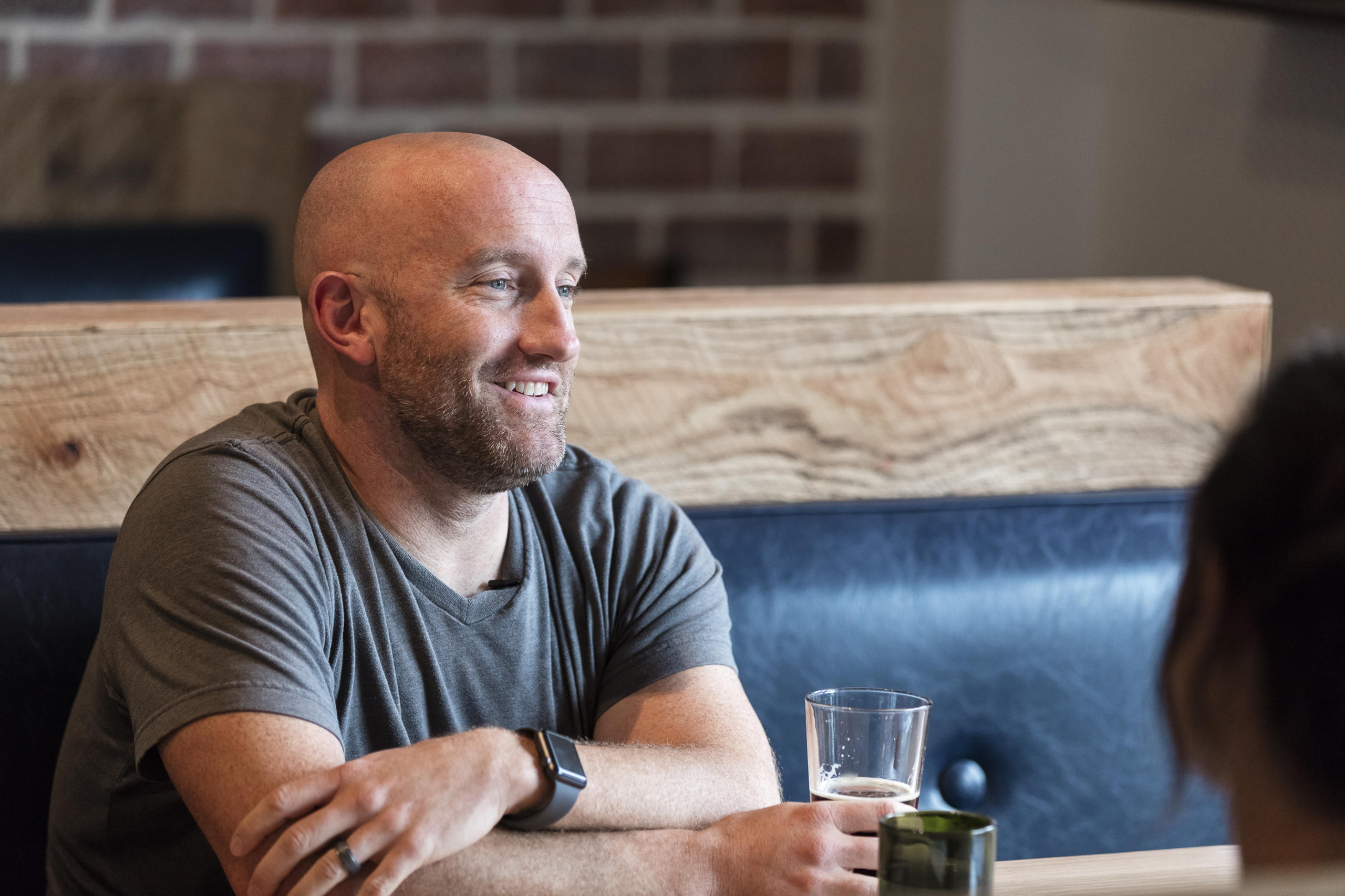
How to Move from Idea to Market Fit: Six Insights from Brian Powers
When Brian Powers founded PactSafe, he didn’t expect the online signature platform would be met with much demand. It was a side project, something he did in addition to his day job as an attorney for tech firms. His clients needed a better way to manage terms and conditions online, so he developed a solution.
But the idea grew from there, far beyond Brian’s initial expectations. Today, PactSafe serves a diverse customer base by offering a more robust and extensible signing platform than any other signature platform. And it’s no longer a side project for Brian. He’s focusing full-time on claiming more of the digital transactions market, predicted to be worth $30 billion by 2020.
Brian’s story illustrates a common theme amongst entrepreneurs: if your product is useful, you’ll find a market for it. But that process doesn’t happen overnight. It requires patience, expertise and hard work.
In this article, Brian shares six tips to guide innovators as they develop a product and find the right market.
1. Solving problems creates demand.
Brian didn’t start out with ambitious goals for leading the online signature industry. At the time he thought, “Okay, let’s make this a side business, a little mailbox money business. We’re going to create this product, build an API, and developers can use it for $15 a month to plug into their websites.”

The software was initially designed as a solution for small-to-medium businesses. Brian didn’t see any other uses for it, but customers did. “As soon as we started signing some people up, just out of nowhere this enterprise interest came in,” he remembers. “I incorrectly assumed big companies had built things to address all these pain points. What I found out was: they had pain points that I didn’t even know about.”
Now as he looks back, Brian says, “How our product fits into the market is not how we thought it would fit when we first started.” The same is true for many other startups. But if you concentrate on solving real problems, it’s much easier to find the right market for your product.
The Takeaway: When you see a problem, solve it. If your solution is truly useful, customer demand will drive growth, and as you grow, you’ll find even more problems to solve.
2. Don’t be daunted by initial failures.
When enterprise firms began reaching out to Brian, he knew he’d happened on something big. But that doesn’t mean it was smooth sailing from there on. In fact, Brian’s first major product demonstration was a flop. A large, multi-billion dollar company out of Texas called and asked for a demo. Brian agreed. The problem was he didn’t know how to demo his product yet. “The product kept breaking,” he says. “It was the worst demo you can imagine.”
He didn’t land that contract, but it was a pivotal moment nonetheless. “That’s an important part of the story because that’s where it all flipped,” Brian says. He realized after that meeting that his idea was viable on a larger scale. Over the next six months, he transitioned out of his law practice and began focusing on PactSafe full-time.

Brian says, “I go out of my way to tell people it’s okay to mess up.” He adds that accepting failure isn’t the same thing as repeating your mistakes. “Don’t just think, ‘Oh I’m never going to do that again,’” he says. Instead, he advises innovators to ask themselves, “Why did that happen? What can you do differently next time?”
The Takeaway: You’re going to make mistakes early on. That doesn’t mean you should pack up and go home. Take everything in stride, and learn from your mistakes instead of being discouraged by them.
3. Validate, then refine your idea.
As Brian’s first demo goes to show, a business can’t survive on customer interest alone. You need to test market fit and perfect your product if you want to make actual sales. Once PactSafe started getting inquiries from larger companies, Brian sought out advice from experts.
First, he reached out to an early employee at Amazon and asked if a signature platform would be useful at the enterprise level. Brian’s contact responded enthusiastically, saying, “Yeah, this is a huge problem … We kind of have a system in place for it, but it’s not good. It doesn’t work. It’s very difficult to do. I know this is a problem with others too.”
“I made some other calls,” Brian goes on. “And I figured out this is a problem that nobody is solving.” From there, he hired product and engineering experts to ensure future demos would go over without a hitch. “After I had those conversations, the priority became figuring out how,” he says. “That’s why I brought on some product and engineering heavyweights as co-founders. We spent the better part of a year rebuilding the product before we really did anything in terms of selling and marketing.”
The Takeaway: Coming up with your core concept is only the first step. You’ve got to conduct the due diligence of vetting your idea, then work rigorously to refine the product until it’s ready for market.
4. Let go of your assumptions, and listen to your customers.
As customers start to use your product, it’s likely they’ll have thoughts about how it could be more useful. You should listen to them, Brian says. They know your market better than you do because, after all, they are your market. “Some of our early big customers took the product, and they flipped it on its head,” he says.
“We had to understand the customer and not make assumptions about value and pain.”
For example, one major IT client asked if PactSafe could adapt its software for more types of contracts. “They wanted to move towards a more frictionless contracting flow,” Brian explains. “They didn’t want squiggly lines. They didn’t want to turn the phone. They didn’t want five clicks before you could sign. They wanted click-click-done, which was really never part of the original plan.”

The PactSafe team evolved the product so the client could seamlessly embed contracts, then extended the service to more customers. Now they regularly check in with customers about what would make the product more helpful, and PactSafe developers have made the platform as flexible as possible. “We built the product in a way that allows the customers to figure out how and why they need to use it,” Brian explains. “They can really just tailor it however they need to.”
The Takeaway: Don’t box yourself—or your customers—in by limiting the scope of your product. Instead, let customer feedback inform what features and services you add.
5. You might be ahead of the market.
Finding a market fit requires not only the right product for the right audience, but also the right timing. When Brian started PactSafe, he was ahead of the curve. “Where we started was driven completely from risk that I saw with my clients in case law,” he explains. “It didn’t necessarily mean that there was a market for that product, yet.”
His early enterprise adopters quickly realized the benefits of a secure contract platform, but more traditional legal entities weren’t as fast to catch on. Brian says PactSafe’s current success wouldn’t have been possible if the legal landscape weren’t changing around it. “By and large, most lawyers two years ago weren’t really looking at the things that we were solving,” he explains. “That’s starting to change now quite a bit.”
Because Brian saw the writing on the wall, his product was ready and waiting when demand for it began to grow. Now he says, “the market’s catching up.”
As an innovator, your role is to think critically about what your industry will need in the future.
That requires a keen eye for trends and patience when customers are slow to adopt new technology.
The Takeaway: It can take time for innovations to catch on, but don’t let that discourage you. Identify and address upcoming problems in your industry, and you’ll be poised for success when the time is right.
6. Don’t get sucked into the comparison game.
The early days of founding a company are stressful ones, and it’s easy to compare your progress to that of other startups. But Brian says founders should resist this urge:
“Don’t worry about how Company X is growing or Company Y has raised this, or Company Z has quadruple your head count. Who cares? Every business is different.”
If you fixate on what other companies are doing, you’ll mimic their innovation and build your product reactively instead of creating what the market really needs. “It can be insanely distracting and motivating for all the wrong reasons,” Brian says. “It has no correlation to the actual success of a business.”
Instead, he says founders should keep their heads down and study their customers, not their competitors. “Build your business, and don’t pay attention to all the noise,” Brian urges. “Focus on what’s worked. You focus on the customers, and you listen to your own people.”
The Takeaway: If you’re busy eyeing others’ success, you’re not busy creating your own. Stay in your lane, make your product great, and the rest will come together.
Pain Points, Product and Perseverance
Developing the right product for your market and identifying the right market for your product is an ongoing process. It takes the right mix of expertise, research and timing. And even after you’ve successfully brought a product to market, you must continue to meet the changing needs of your customers.
Whether you’re just starting out or adapting an existing model, the same principles hold true.
If you solve your customers’ problems in a way nobody else can, you’ll have no trouble finding a market for your product.
Start by identifying their pain points, then developing a solution—one that make sense for the way your customers work. Be relentless as you hone and perfect your model. Then persevere, recognizing that it may take time for your business to grow and that the process of addressing your customers’ needs is never really done.



